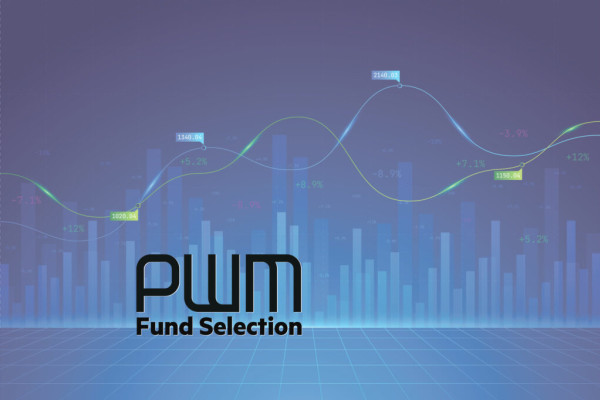
Each month in PWM, nine top European asset allocators reveal how they would spend €100,000 in a fund supermarket for a fairly conservative client with a balanced strategy
Benjamin Hamidi
Senior portfolio manager, ABN AMRO Investment Solutions. Based in: Paris, France

“Markets continue to be driven by beliefs about the future behaviour of central banks and the risks of a soft or hard landing. In the US, inflation is shifting from goods to services. Core services inflation depends on long-term inflation expectations and the degree of labour market slack. The Fed is trying to cool high inflation and very strong labour market pressures, while avoiding a deep recession and a sharp rise in the unemployment rate. The main risk over the next few months is an earnings recession. We maintain the current allocation with a broadly neutral allocation to US equities, but underweight in Europe.”
Luca Dal Mas
Senior fund analyst, Aviva Investors. Based in: London, UK

“During October, markets stabilised following expectations of a Fed pivot, while Chinese stocks fell, following the latest Chinese Party Congress where president Xi Jinping was confirmed to an unprecedented third term — effectively making him leader for life. Early survey readings for October were gloomy, with headline numbers for Europe pointing clearly to the likelihood of recessions beginning in in the fourth quarter while surveys in the US are more upbeat, especially for the service sector. In the UK, Liz Truss was forced to resign as prime minister after the failure of her fiscal policies which forced the central bank to restore stability in the local bond market. In portfolios we have slightly increased our equity exposure, focusing on the US market.”
Jorge Velasco
Director of Investment Strategy, CaixaBank Private Banking. Based in: Madrid, Spain

“This month we made some adjustments to the fixed income portfolio. We increased the risk profile of our bet on financial subordinates and started to slightly increase the duration and credit sensitivity of the overall portfolio. We maintain our strategic prudence positioning while waiting for a window of opportunity to increase the portfolio’s risk somewhat.”
Kelly Prior
Investment Manager in the Multi-manager team, Colombia Threadneedle Investments. Based in: London, UK

“October bought with it mixed returns, but generally proved to be a better month for most assets, with markets helped by hopes of a pivot in the pace of US interest rate rises, a fall in gas prices in Europe and an altogether calmer feel to the UK political situation. The US was the star with the Pzena US Large Cap Value Fund compounding the US market’s positive move, with the TT Emerging Markets Unconstrained losing ground as EM floundered. The prospect of a change in narrative from the central banks of the developed world will keep the final months of the year interesting, ahead of what is likely to be a new year with continued volatility and potentially challenging economic conditions.”
Silvia Tenconi
Multimanager Investments & Unit Linked, Eurizon Capital SGR. Based in: Milan, Italy

“In October the performance of the portfolio was positive, with only a few negative contributors: Lyxor MSCI China UCITS ETF, Invesco Asian Equity and Baillie Gifford Japanese Equity. This didn’t come as a surprise, given the market-unfriendly statements that were made at China’s Communist Party Congress, at the end of October. In US and Europe, on the other hand, equity and credit markets started to rise again, and interest rates continued to climb, as inflation surprised to the upside once more. We keep our allocation unchanged, preferring equity and credit to government bonds.”
Richard Troue
Fund Manager, Hargreaves Lansdown Fund Managers. Based in: Bristol, UK

“Trojan Global Income has held up relatively well this year. It’s a portfolio of high-quality companies that can navigate through a tough economic environment. Many of these companies should be able handle an inflationary environment and pass cost increases to customers. If inflation is indeed peaking, then input costs might start to fall again, sowing the seeds for margin expansion. It’s true that the fund might lag a strong growth rally, but some resilience from short-term shocks combined with steady growth in capital and income over the medium-to-long term is a price worth paying. This remains a great core global investment, in my view.”
Paul Hookway,
Senior Fund Analyst, Kleinwort Hambros. Based in: London, UK

“Markets reacted well to the election of Rishi Sunak in the UK, in particular the rally in the 10-year gilt to 3.5 per cent yield from its peak of 4.5 per cent in September. While markets are calm, until the government’s taxation and budget adjustments are published on the 17th November, we are still taking a cautious stance. We see no reason to change our asset allocation and are looking to maintain our risk off stance. While equity markets are in negative momentum and recession in developed markets are increasingly likely, we will not change. We are focusing on the diversifiers in the portfolio, looking for the most attractive opportunities on offer from the recent declines.”
Antti Saari
Chief Investment Strategist, Nordea investments. Based in: Copenhagen, Denmark

“October provided some much-anticipated relief to investors. Global stocks eked out gains while bonds see-sawed due to volatile yields. While the macro outlook remains cloudy, some of the biggest concerns eased. This also lends some credibility to current earnings estimates, although that outlook is also risky. Central banks will keep tightening, but a slower pace is approaching. Valuation is most attractive for the riskier bond segments, which is what investors should have their eye on. Yields have risen and credit spreads are high. Due to the current uncertainty, however, we think it makes sense to start with a conservative approach by overweighting European Investment Grade bonds. While spreads there may well rise further, a lot is already reflected in pricing. Within equities, we upgrade Europe and downgrade North America to neutral. While North America is still likely to outperform from a growth perspective, valuation and investor sentiment are so depressed in Europe that the risk of a rally in the face of a slightest hint of good news.”
Didier Chan-Voc-Chun
Head of Multi-Management and Fund Research at Union Bancaire Privée (UBP). Based in: London, UK

“Over the third quarter of 2022 the European Central Bank raised key rates by 75 basis points (bps) to 1.25 per cent, followed by a 75bps hike announced by the Fed bringing rates up to 3 to 3.25 per cent. These moves led to significant volatility in currency markets, with the US dollar appreciating against major currencies over the quarter. Sterling, on the other hand, traded at historical lows after newly announced fiscal plans sparked concerns over spiralling inflation and government debt burden. The decline in most of the equity markets in 2022 has reflected both the rapid withdrawal of pandemic-era policy support from the global economy and the shock to global commodity supply chains that have spurred inflationary pressures around the world, unlike any since the 1970s.”



